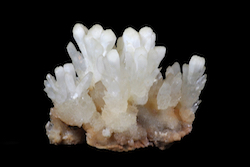How unveiling zeolite’s structural development will benefit future synthetic designs
Researchers drawing on work conducted by the EU-funded project, GROWMOF (Modelling of MOF self-assembly, crystal growth and thin film formation), have successfully used molecular simulations to better understand the structure of zeolite aluminosilicate. These insights will be valuable to efforts being made to design ‘hypothetical’ synthetic versions, intended to offer a wider range of material science applications for these excellent catalysts, filling a gap in the market. The ‘window of flexibility’ A zeolite is a special type of rock which can trap water within it and is associated with 200 minerals. Zeolite aluminosilicate, has so far supplied chemistry with useful catalysts, enabling a wide range of products from industrial chemical processors to cat litter. While the tetrahedral framework structure of zeolites creates the perfect shape, surface area and chemical activity for effective catalysts, their industrial adoption is hampered by the narrow variety of frameworks available. Much research has been expended into the generation of millions of new hypothetical versions to be synthesized, but success has so far been limited. The team, publishing in ‘Royal Society Publishing’, explored the so-called ‘window of flexibility’, whereby the zeolite framework structure allows scientists a degree of atomic manipulation, while keeping the overall structure intact. Previous research had indicated that this phenomenon is present in almost all known naturally occurring zeolites, the only exception being goosecreekite. At the same time, it is uncommon in the hypothetical structures created by scientists, suggesting its existence would make that hypothetical a good candidate for synthesis. Offering hope for the location of more promising candidates, the researchers adopted simulation techniques to demonstrate that using softer constraints in the manipulation of the ‘bar’ parts of the zeolite tetrahedral structure, could open the window of flexibility, around aluminium sites. Using this technique, the team were even able to find evidence of a flexibility window in goosecreekite. Advancing materials science The study complements the team’s recent investigation of flexibility and the extra-framework content in faujasite. Additionally, it builds on their work to extend the methodology of geometric simulation software to better understand metal-organic frameworks (MOFs). MOFs are three-dimensional structures with metal corners and organic molecule linkers and are considered to be amongst the most exciting developments in nanoporous material science, as they offer a near infinite range of material combinations. Applications mooted by GROWMOF include gas separation and drug delivery. GROWMOF was set up with the understanding that for MOFs to reach their potential, more predictability in their synthesis was required, alongside a better appreciation of the resultant material properties, as well as of the full pathway from molecular assembly to crystal growth and thin film formation. Towards this end, this latest study clearly demonstrates that geometric simulation for framework structures can be extended beyond its original remit of modelling silica (SiO2) systems. The researchers are confident that the work could fundamentally transform our understanding of how MOFs form at a variety of length scales, while opening up new research avenues for the targeted synthesis of MOFs. For more information, visit: CORDIS project webpage
Countries
United Kingdom



